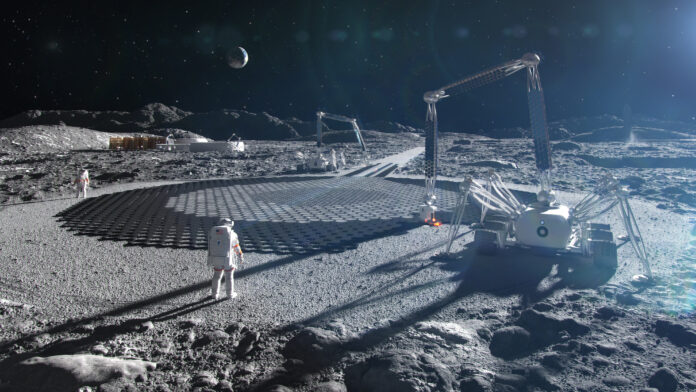NASA’s plans to return astronauts to the Moon include giving them someplace roomier to stay than their own spacecraft. So the space agency is paying a company that 3D prints home structures on Earth to develop the same technology for lunar use.
Under a $57.2 million contract announced(Opens in a new window) Tuesday under NASA’s Small Business Innovation Research(Opens in a new window) program, Austin-based Icon Technology, Inc., will continue previous collaborations with NASA to develop its Project Olympus additive-construction concept(Opens in a new window) into a system to build structures on the moon.
The raw material for the first such structure is already on the Moon: the surface layer of soil, or regolith (PDF(Opens in a new window)) to geologists. NASA’s plans for long-term exploration of the Moon and, eventually, Mars rely heavily on generating needed materials and supplies from what’s on the ground there—what it calls “In situ resource utilization(Opens in a new window)”—instead of shipping everything from Earth.
In Icon’s idea, robots will mine regolith for processing by Olympus machines into a material that can then be extruded to create structures that you might think of as exceptionally sci-fi sand castles.
Icon has been using the same basic concept, but with trucked-in supplies, to 3D-print parts of houses around Austin(Opens in a new window). The company is also 3D-printing a simulated Mars habitat(Opens in a new window), called Mars Dune Alpha(Opens in a new window), at NASA’s Johnson Space Center outside Houston.
NASA, for its part, has already spent years exploring possible uses for 3D printers inside spacecraft, having flown the first 3D printer(Opens in a new window) to the International Space Station in 2014 to test its ability to manufacture(Opens in a new window) parts and tools as needed. Last year, it launched hardware to the ISS to test 3D printing using simulated regolith.
Recommended by Our Editors
The sight of astronauts leaving boot prints on the Moon and then bunking down in a 3D-printed shelter remains years off, but on Nov. 16 NASA took one small step toward that goal by successfully launching its giant Space Launch System rocket and the Orion capsule atop it on an uncrewed test voyage around the Moon.
That Artemis 1 mission(Opens in a new window) is now halfway complete, with Orion reaching a distance of nearly 270,000 miles from Earth on Monday. The capsule, with a payload of such test gear as a computer running a version of Amazon’s Alexa, is scheduled to splash down in the Pacific on Dec. 11.
Get Our Best Stories!
Sign up for What’s New Now to get our top stories delivered to your inbox every morning.
This newsletter may contain advertising, deals, or affiliate links. Subscribing to a newsletter indicates your consent to our Terms of Use and Privacy Policy. You may unsubscribe from the newsletters at any time.
Hits: 0















